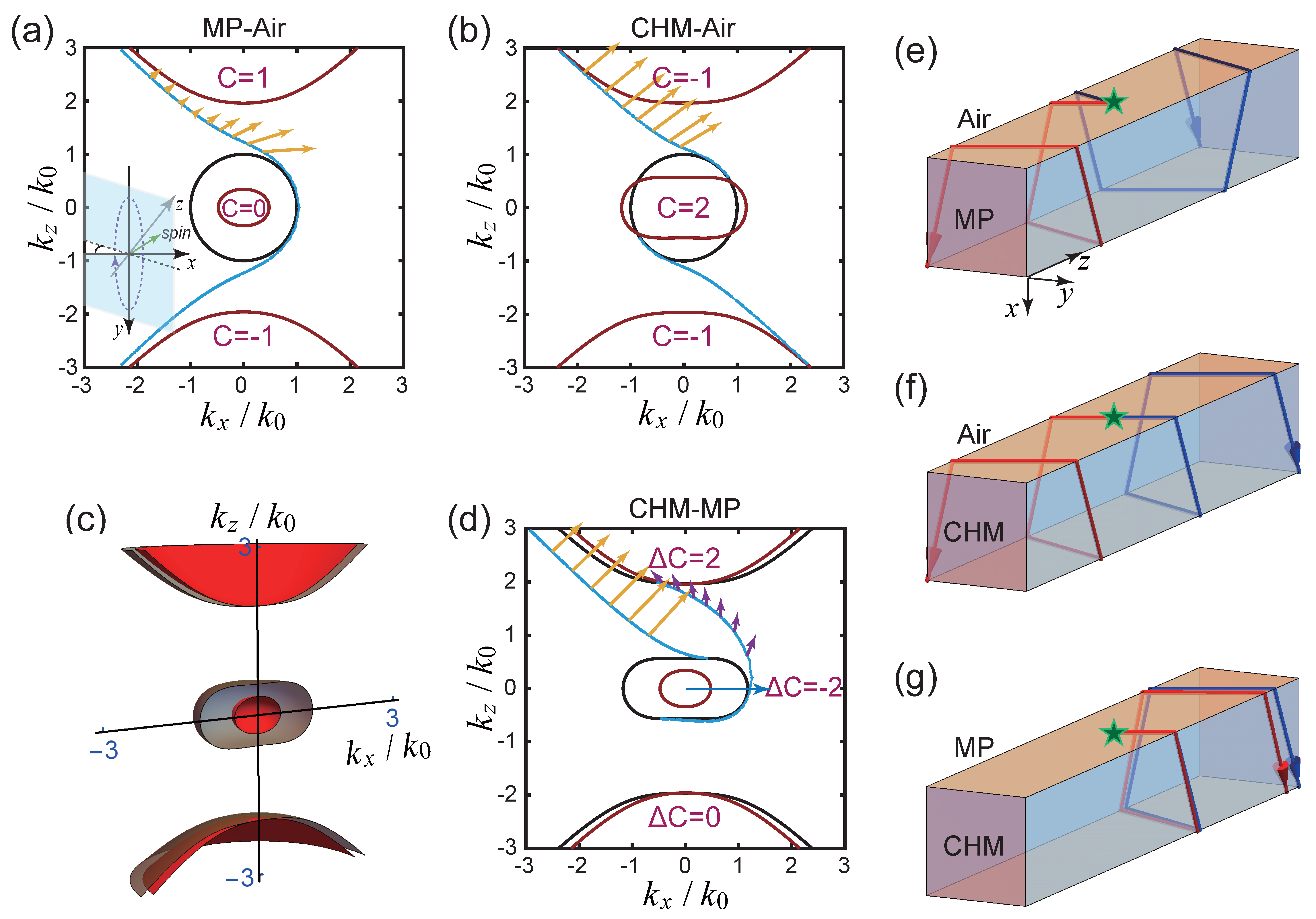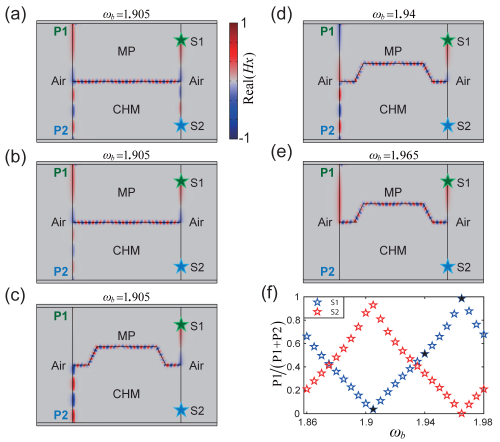Recently, researchers from Shanghai Institute of Optics and Fine Mechanics, Chinese Academy of Sciences cooperated with the team of Professor Shuang Zhang from the University of Birmingham in the UK have theoretically studied the surface states between two topological non-trivial photonic systems. A special surface wave propagation mode was proposed and used to design nonreciprocal waveguides, moreover, the propagation behavior of such surface waves can be dynamically changed by changing the strength of the magnetic field. The relevant results were published on Laser & Photonics Reviews on February 25, 2021.
Topological photonics is a frontier scientific research field. A typical feature of topological systems is the existence of surface states without dissipation modes. This surface state can effectively bypass obstacles on the transmission path and reduce energy loss. There are broad application prospects on the integrated chips. The current research objects are mainly concentrated on the surface state between topological non-trivial materials and air. This work mainly focuses on the surface states between two topological non-trivial systems, the results show a special pattern of electromagnetic waves, which can only propagate in one direction in 3D space.
The team used metamaterials to construct time symmetry breaking and spatial symmetry breaking systems, specifically magnetized plasma and chiral hyperbolic metamaterials. The Hamiltonian, energy band structure, Berry curvature, Chen number and Fermi arc distribution of the two systems are calculated using effective parameters. The calculation results show that although the two systems can have similar Fermi arcs, their topological properties are completely different, the surface states between them are unique. Unlike the general form of surface state propagation in three-dimensional space, which can flow in both directions, here, both surface states are restricted to half of K-space, and the direction of energy flow is unidirectional, as shown in Fig. 1(d) and 1 (g).
Based on this property, devices such as nonreciprocal waveguides, surface wave multiplexing and division, optical switches, and optical isolation can be constructed. With reasonable parameter settings, the research team makes the propagation paths of the two surface states coincide, the tunability of magnetic field in the magnetized plasma enables the conversion between two modes. Fig.2 shows the simulation results. The use of a magnetic field to control the electromagnetic wave transmission path and achieve an arbitrary splitting ratio is a step forward for the application of dynamic topological surface states.
This work was supported by the National Natural Science Foundation of China, the Key Research Program of Frontier Science of the Chinese Academy of Sciences, and the China Scholarship Council.

Fig. 1. The distribution of Fermi surfaces and Fermi arcs between different systems and the corresponding surface state propagation diagram. (Image by SIOM)

Fig. 2. (a) The multiplexing and division of surface states, (b-f) simulation results of dynamically routing topological surface waves. (Image by SIOM)
Article website:
https://doi.org/10.1002/lpor.202000360
Contact:
WU Xiufeng
General Administrative Office
Shanghai Institute of Optics and Fine Mechanics, CAS
Email: xfwu@siom.ac.cn
Web: http://english.siom.cas.cn/